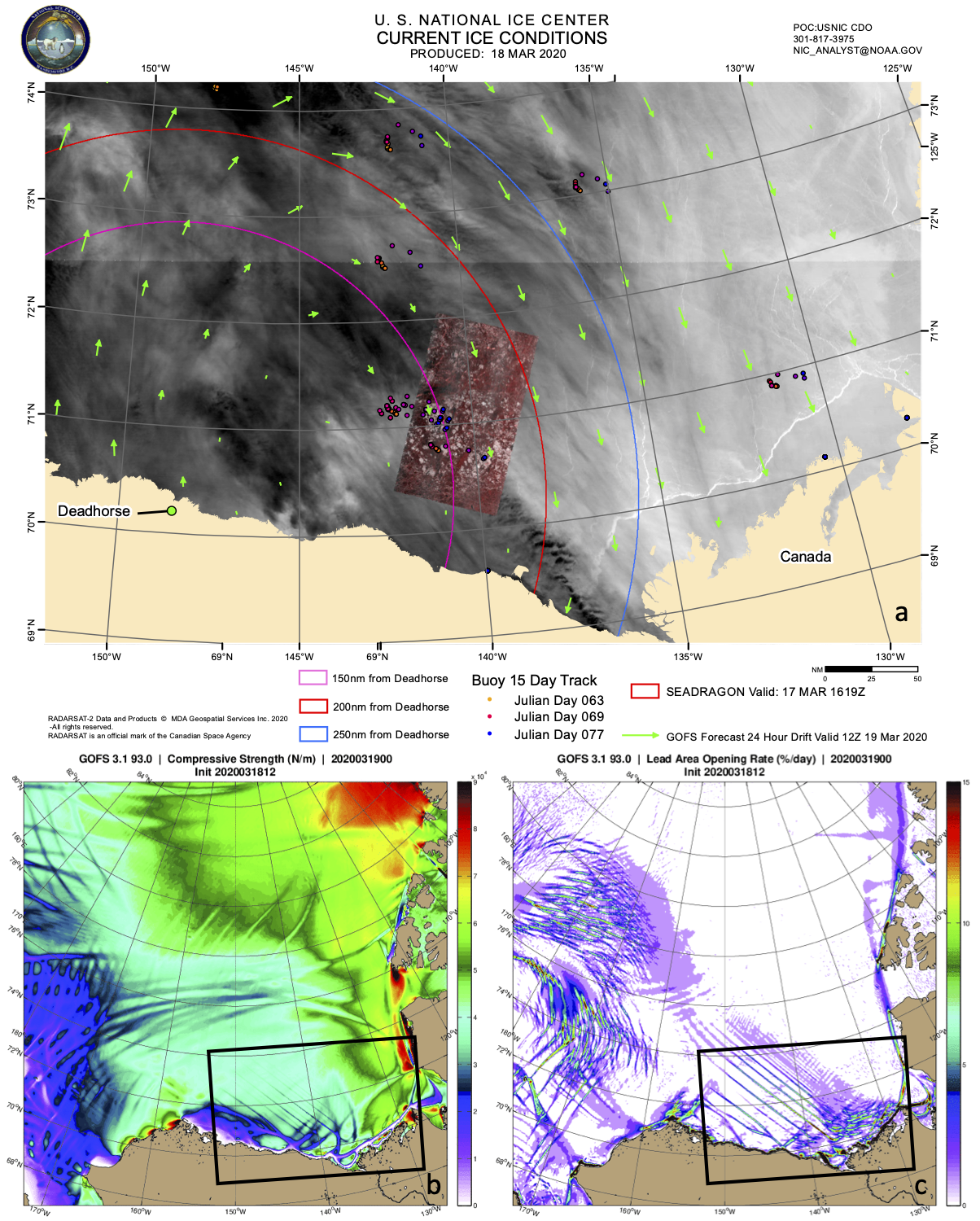Should Sea-Ice Modeling Tools Designed for Climate Research Be Used for Short-Term Forecasting?
The Science
The desire to understand and predict sea ice raises the question of whether more complex models—which incorporate a larger number and greater fusion of environmental processes and physics—can address the many concerns of both research and operational user communities. For example, balancing short-term versus long-term predictions and local versus global impacts are significant challenges for the one-size-fits-all approach to model development. Models such as the CICE sea-ice model were developed specifically for research purposes and were later adopted by short-term forecasters. A DOE/BER/ESMD-supported workshop (Blockley, E., and Coauthors, 2020: The Future of Sea Ice Modeling: Where Do We Go from Here?. Bull. Amer. Meteor. Soc., 101, E1304–E1311, The Future of Sea Ice Modeling: Where Do We Go from Here? ) brought these communities together to discuss the challenges and opportunities, with a particular focus on the physical processes and complexity needed to bridge the gap between weather and climate modeling requirements. These discussions were further fleshed out in this paper with recommendations for a flexible, community modeling framework approach.
The Impact
The overview research sheds light on the challenges and opportunities of employing complex sea-ice models for short-term forecasting and suggests a path forward that enables knowledge and code sharing among research and forecasting centers.
Summary
Although the same models can be used for both research and operational applications, in practice this is complicated, with different products and parameters needed, or desired on very different spatial scales. Challenges are numerous, including computational resource constraints for both research and operations, data assimilation necessary for initializing short-term forecasts for which sea ice physical parameterizations are irrelevant, and lack of validation metrics and probabilistic risk information needed for operational applications. The creation of an international benchmarking product is recommended for model intercomparisons and forecasts, as an initial, coherent, directed strategy toward a sea-ice modeling and observations co-design cycle valuable for both research and operations. A shared, community framework for sea-ice modeling would seek to leverage the whole community for model development, verification, and validation toward a goal of mutually useful, flexible, robust sea-ice modeling tools. Within a common conceptual framework, this can take the form of multiple model frameworks (e.g., different dynamical cores) with shared elements (e.g., column physics). With a strong foundation in physics, computer science, and observations, this community could use models to make recommendations for targeting observations as well as predicting the sea-ice state and future change. (See also Hunke, E., The Challenges and Opportunities of One-size-fits-all Sea-ice Models. SIAM News, 27 October 2020. The Challenges and Opportunities of One-size-fits-all Sea-ice Models )
Publication
- Hunke, E., Allard, R., Blain, P. et al. Should Sea-Ice Modeling Tools Designed for Climate Research Be Used for Short-Term Forecasting? Curr Clim Change Rep 6, 121–136 (2020). https://doi.org/10.1007/s40641-020-00162-y
Funding
- The Department of Energy Office of Science, Biological and Environmental Research program supported this study as part of the Earth System Modeling program area through the E3SM project.
Contact
- Elizabeth Hunke, Los Alamos National Laboratory
This article is a part of the E3SM “Floating Points” Newsletter, to read the full Newsletter check:



